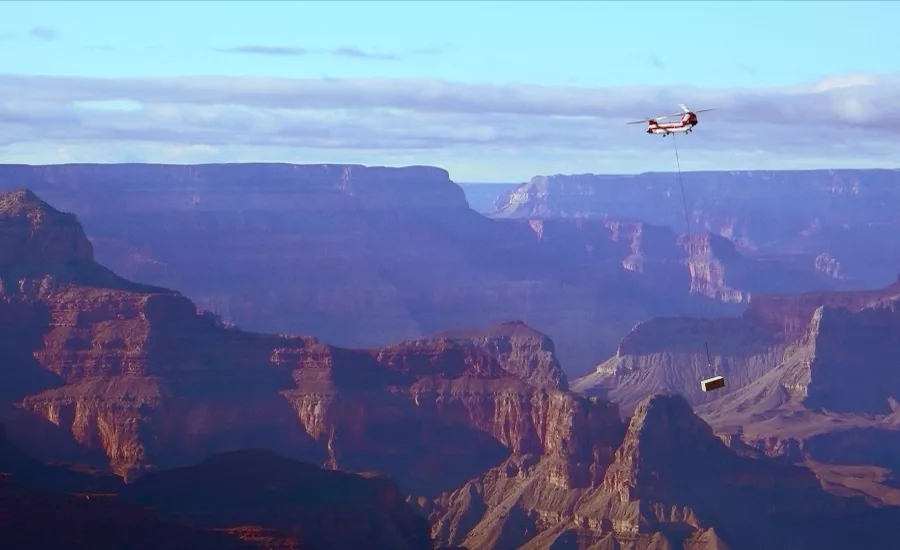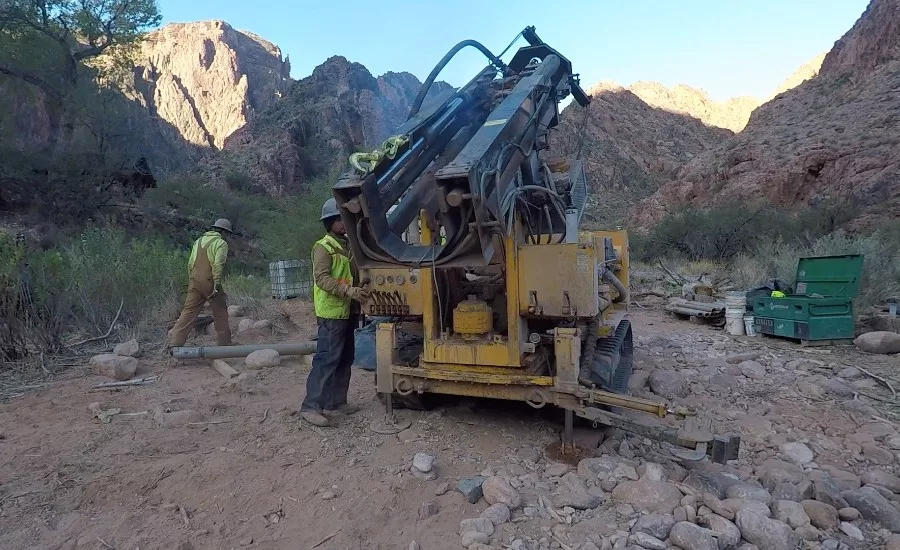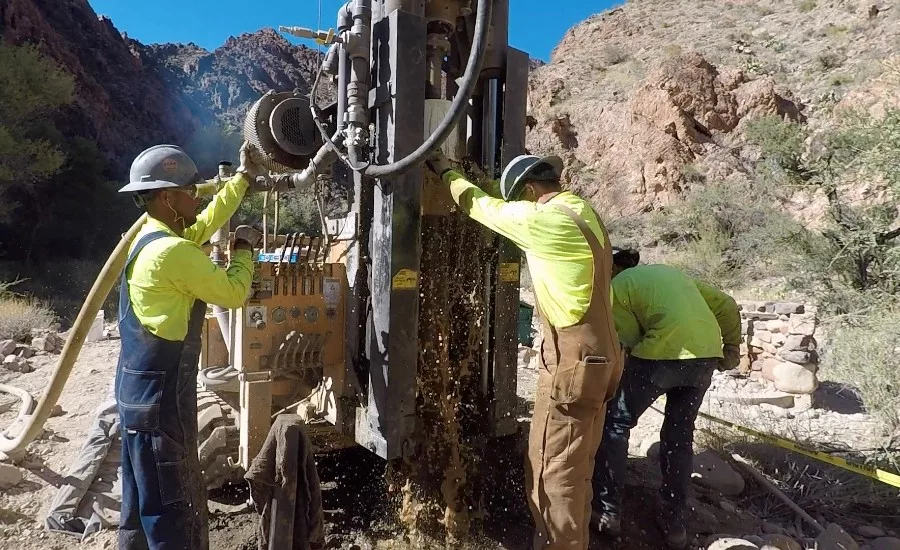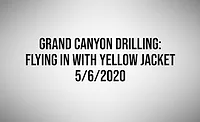Grand Canyon Drilling Project a Logistic Challenge
Visitors Usually Get to Phantom Ranch by Mule

Yellow Jacket Drilling depended on a massive Chinook helicopter to bring their drilling rig and tooling to the Phantom Ranch jobsite in the Grand Canyon.
Source: Yellow Jacket Drilling Services LLC photos


Here at National Driller, we love to hear about challenging drilling jobs. But not all challenges are created equal. So, when we heard about a recent project Yellow Jacket Drilling Services LLC did at Phantom Ranch, we had to find out more.
Visitors usually ride mules to get to the ranch, which the Parks Service describes as “a historic oasis nestled in the bottom of the Grand Canyon.” That meant getting the drilling rig, tooling and other equipment required to supply water to the ranch involved a massive Chinook helicopter.
“This was one of the largest in the lower 48,” says Beau Burgess, Yellow Jacket’s operations manager – Auger Division, of the helicopter. “I think they said it picks up 26,000 pounds, but that’s at sea level and at a certain time of the year. The South Rim is 7,000 feet.” That altitude and the temperature for the time of year, he said, limited the payload range to about 18,000 to 20,000 pounds.
“That Chinook, when it’s parked there in front of you, is a little bigger than a Greyhound bus,” Burgess adds.
The company packed everything into shipping containers, and over a few days flew in equipment, spare parts, extra hammers — the whole kit. They used a 20-foot container for large equipment: their custom tracked drilling rig, a compressor and a Bobcat (all freshly deconned). They dropped off the contents of that box, and flew it back out. Then, they used three 10-foot containers for well materials; drill tools, casing and rods; and miscellaneous supplies like fencing and hand tools. Those three boxes remained on site for the duration of the job.
Once on site, Burgess says drilling operations went as planned, with some extra mindfulness for the environmentally sensitive area. They used primary and secondary containment for any potential spills, and for fuel cells, which they flew in and out every few days.
Yellow Jacket used water from nearby Bright Angel Creek for makeup, so thankfully they had no need to fly that in.
One unusual challenge for this project: the mules bringing in visitors. The pack animals spook easily, so Yellow Jacket’s team had advance briefings about working around them (as well as other aspects of a project at a popular tourist destination). They even changed their safety colors for the project.
“It’s pretty funny,” Burgess says of the mules’ first drilling rig encounter. “You can see the mule train coming in and the first two mules stop in their tracks. They don’t even think about it. They just turn around and start walking back the way they came.” He says it took the mules three or four days to get used to seeing the drilling operations, and they worked out a system where rangers would radio in, and the crew would stop drilling long enough to let the mules pass.
“We do like to think of ourselves that there’s just about no hole we can’t get to.”
– Beau Burgess
But it wasn’t just the mules. The rig also generated its share of interest from visitors.
“Like most drill sites, it's interesting to people,” Burgess adds. “They don't see this kind of equipment every day. … I know my guys got asked lots questions at night. They stayed down there.”
Overall, Yellow Jacket was happy with the completion. The relatively shallow well work didn’t create a lot of cuttings, and crews were allowed to land spread those.
“The drilling project itself, aside from being in the canyon and flying in, really wasn’t that outrageous,” Burgess says. “It was pretty straightforward.”
But, often, it’s not the destination that makes something memorable. It’s the trip.
“We do like to think of ourselves that there’s just about no hole we can’t get to,” Burgess says.
See the Videos
Yellow Jacket, which does water, environmental and geotechnical drilling and servicing across the western United States, made a video about the Phantom Ranch project, which readers can see here: https://youtu.be/N1DWK5w8y9M
We interview Yellow Jacket’s Beau Burgess about this project for our Drilling In-Site video series. See our conversation here: www.nationaldrilller.com/insite.
Looking for a reprint of this article?
From high-res PDFs to custom plaques, order your copy today!



